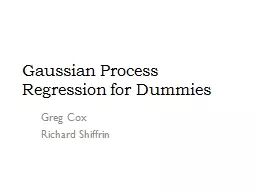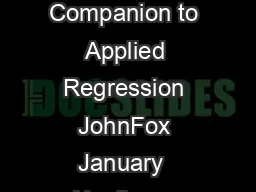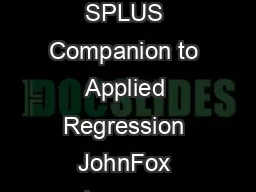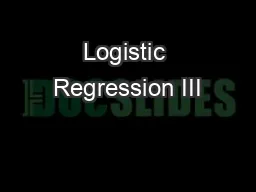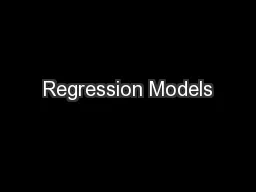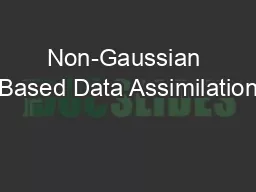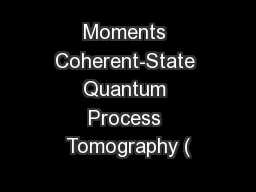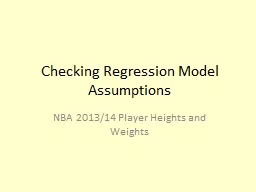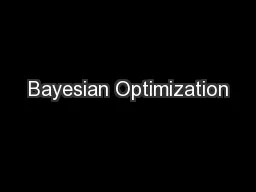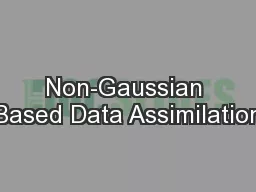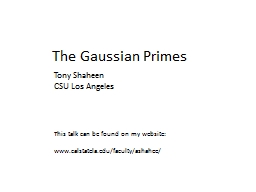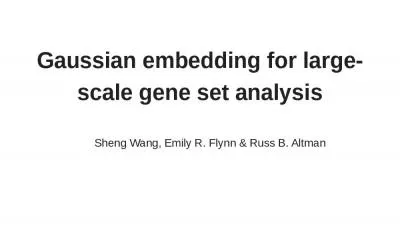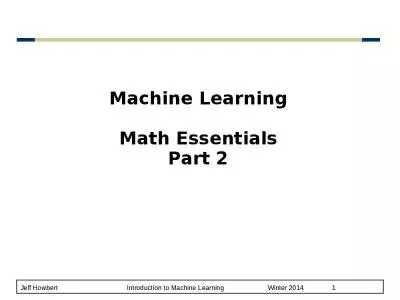PPT-Gaussian Process Regression for Dummies
Author : ellena-manuel | Published Date : 2016-03-30
Greg Cox Richard Shiffrin Continuous response measures The problem What do we do if we do not know the functional form Rasmussen amp Williams Gaussian Processes
Presentation Embed Code
Download Presentation
Download Presentation The PPT/PDF document "Gaussian Process Regression for Dummies" is the property of its rightful owner. Permission is granted to download and print the materials on this website for personal, non-commercial use only, and to display it on your personal computer provided you do not modify the materials and that you retain all copyright notices contained in the materials. By downloading content from our website, you accept the terms of this agreement.
Gaussian Process Regression for Dummies: Transcript
Download Rules Of Document
"Gaussian Process Regression for Dummies"The content belongs to its owner. You may download and print it for personal use, without modification, and keep all copyright notices. By downloading, you agree to these terms.
Related Documents

